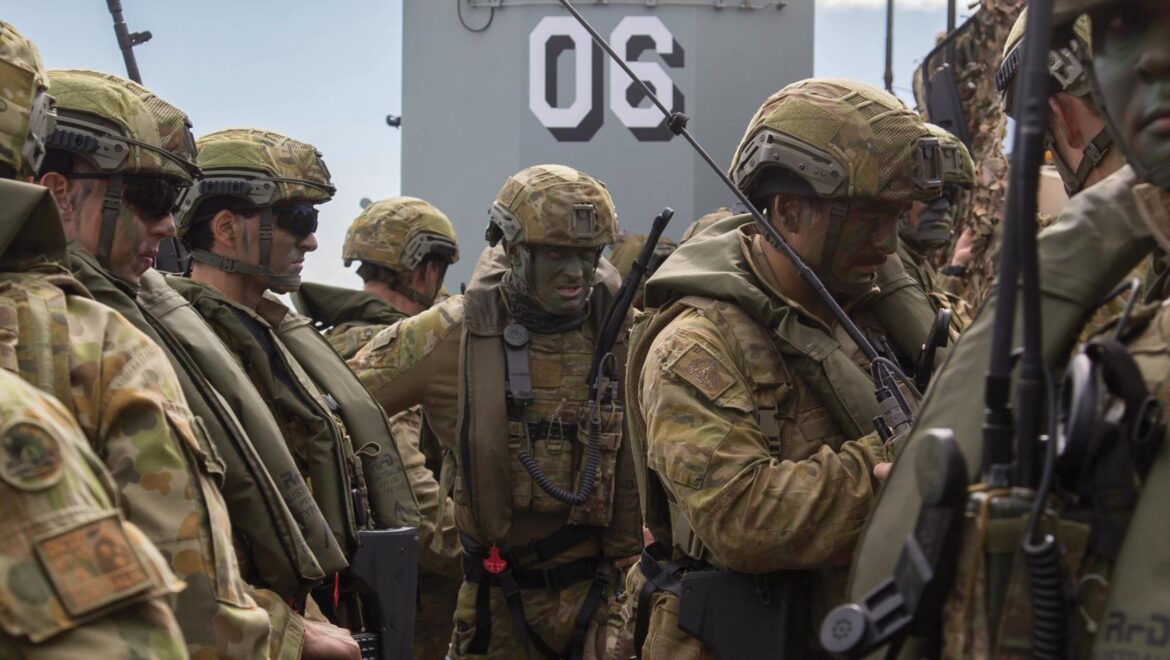Australia has a history of developing amphibious capability in conflict then losing it when peace returns. Recently, though, the nation has entered an amphibious renaissance.
By Lieutenant Colonel Andrew Kirby, Australian Army, and Commander Nicholas Trongale, Royal Australian Navy
From their landing craft, thousands of Australian and U.S. troops surge through the surf onto a South Pacific beach. Overhead, allied aircraft fight for local air superiority, prosecute ground targets, and deliver an airborne brigade deep inland. As the difficult task of establishing logistics over the shore begins, the force faces the daunting challenge of clearing a well-equipped, well-prepared, and resolute enemy.
This scene played out time and again at places whose names are written in U.S. and Australian blood, such as Lae, Bougainville, and Borneo. But the past can serve as prologue, for although the threat has changed, the geography that defines Australia’s strategic circumstances has not.
1. National Security Strategy of the United States of America, December 2017.
2. See Russell Parkin, “Sailors and Seaborne Soldiers in the Defence of Australia, 1914–2001,” in John Reeve and David Stevens, The Face of Naval Battle: The Human Experience of War at Sea (Crows Nest, New South Wales: Allen and Unwin, 2003), 92–112.
3. See David Horner, “The Army, the Navy, and the Defence of Australia and the Empire, 1919–1939,” Chief of Army History Conference, Canberra, 2 October 2013.
4. “Defensive and Offensive Possibilities,” GHQ G-3 Journals & Files box 566 (no 1), April 1942–30 May 1943, Record Group 407 98-GHQ1-32, National Archives and Records Administration, College Park, Md.
5. Australian forces did serve at the Inchon landings but this was limited to naval support from HMAS Bataan and HMAS Warramunga participating in the blockade. Australian War Memorial, “Out in the Cold: Australia’s Involvement in the Korean War,” 20 March 2017.
6. Australian War Memorial, “Out in the Cold.”
7. Paul Dibb, Review of Australia’s Defence Capabilities (Canberra: Australian Government Publishing Service, 1986), 145. Michael Evans, “Unarmed Prophets: Amphibious Warfare in Australian Military Thought,” Journal of the Australian Naval Institute (January/March 1999): 14.
8. Peter J. Dean, “Amphibious Operations and the Evolution of Australian Defense Policy,” Naval War College Review 67, no. 4 (2014): 9.
9. LGEN Angus Campbell, AA, Address to the RAN’s Sea Power Conference, 6–8 October 2015.
10. See Australian Army, “Amphibious Capability.”

